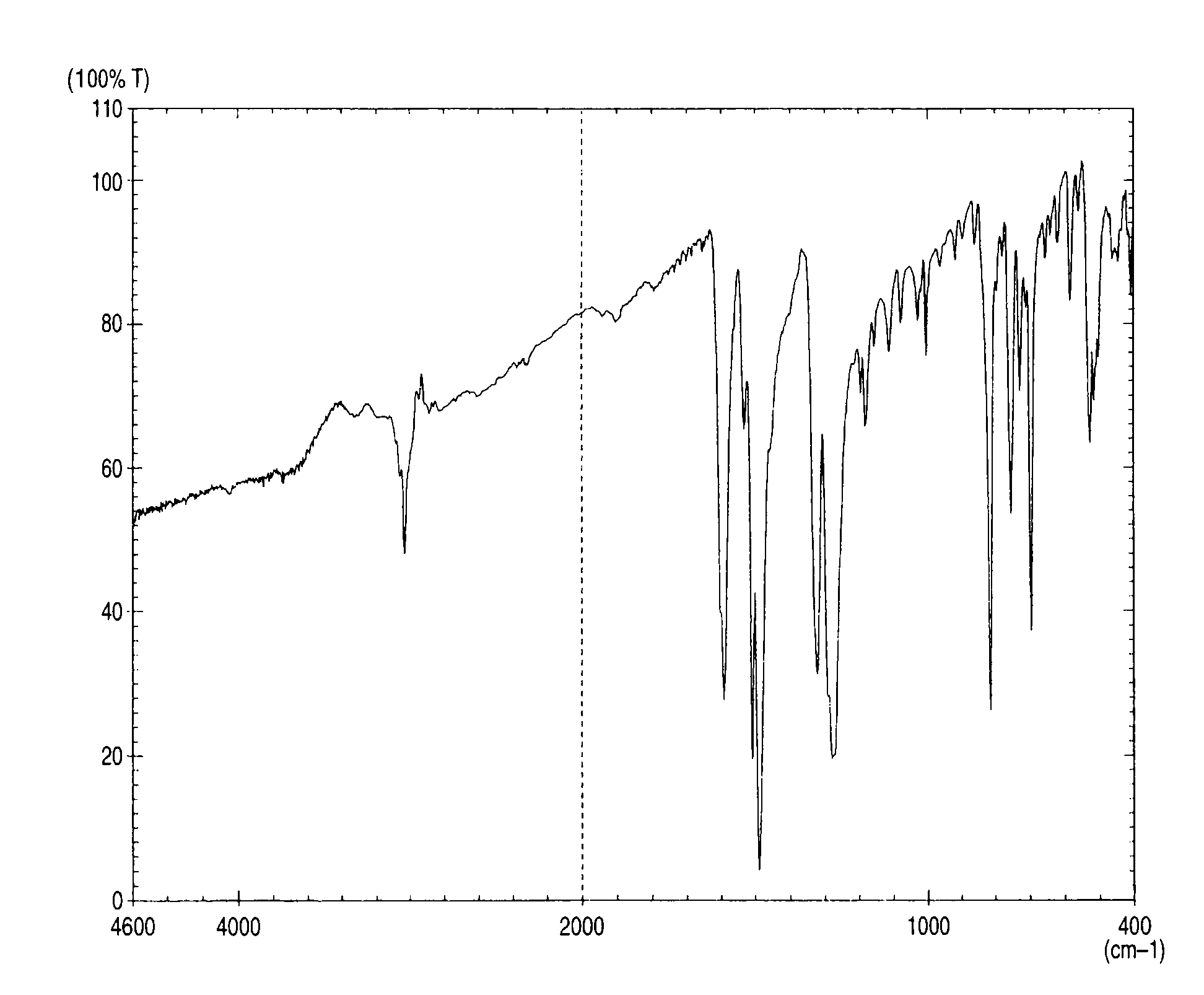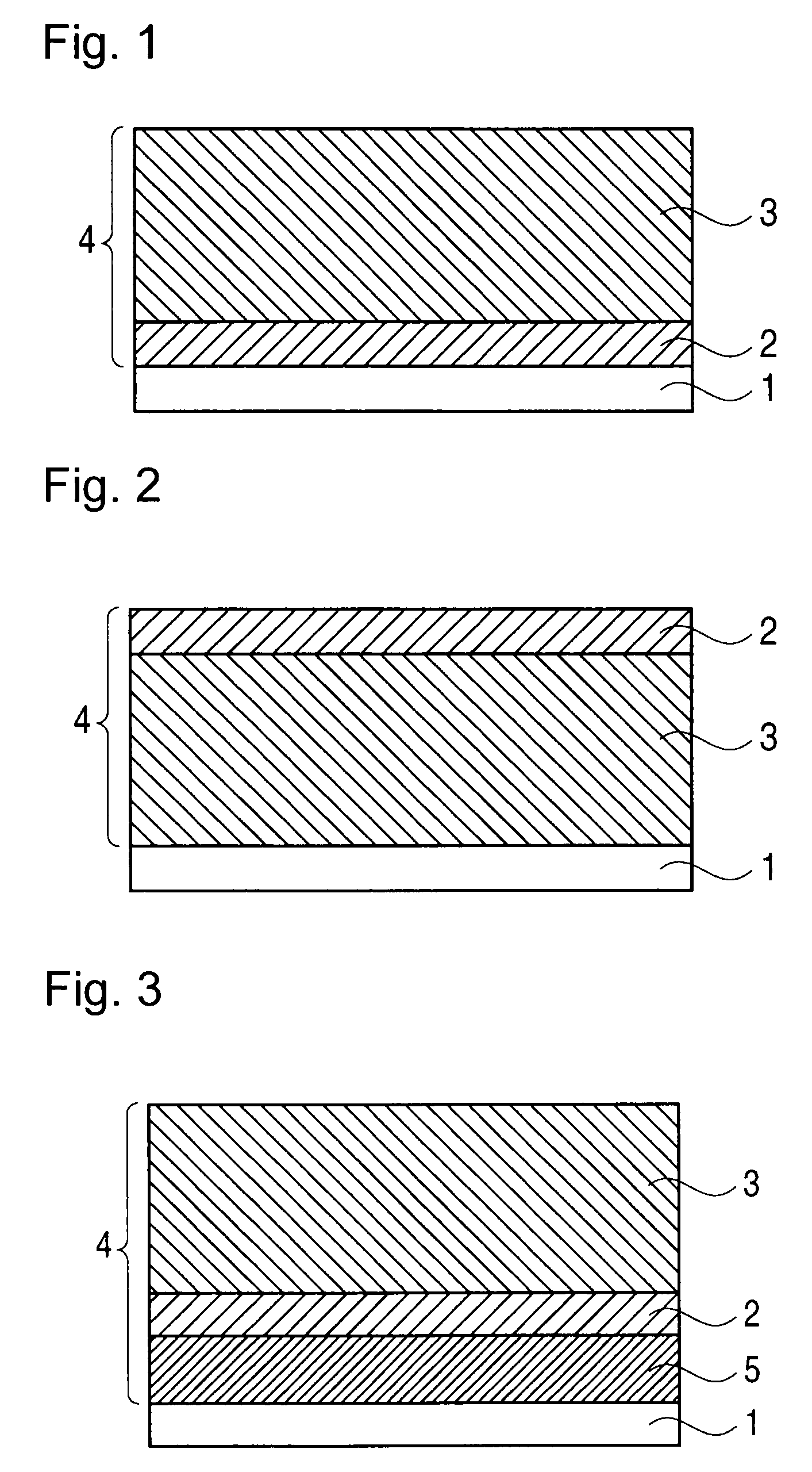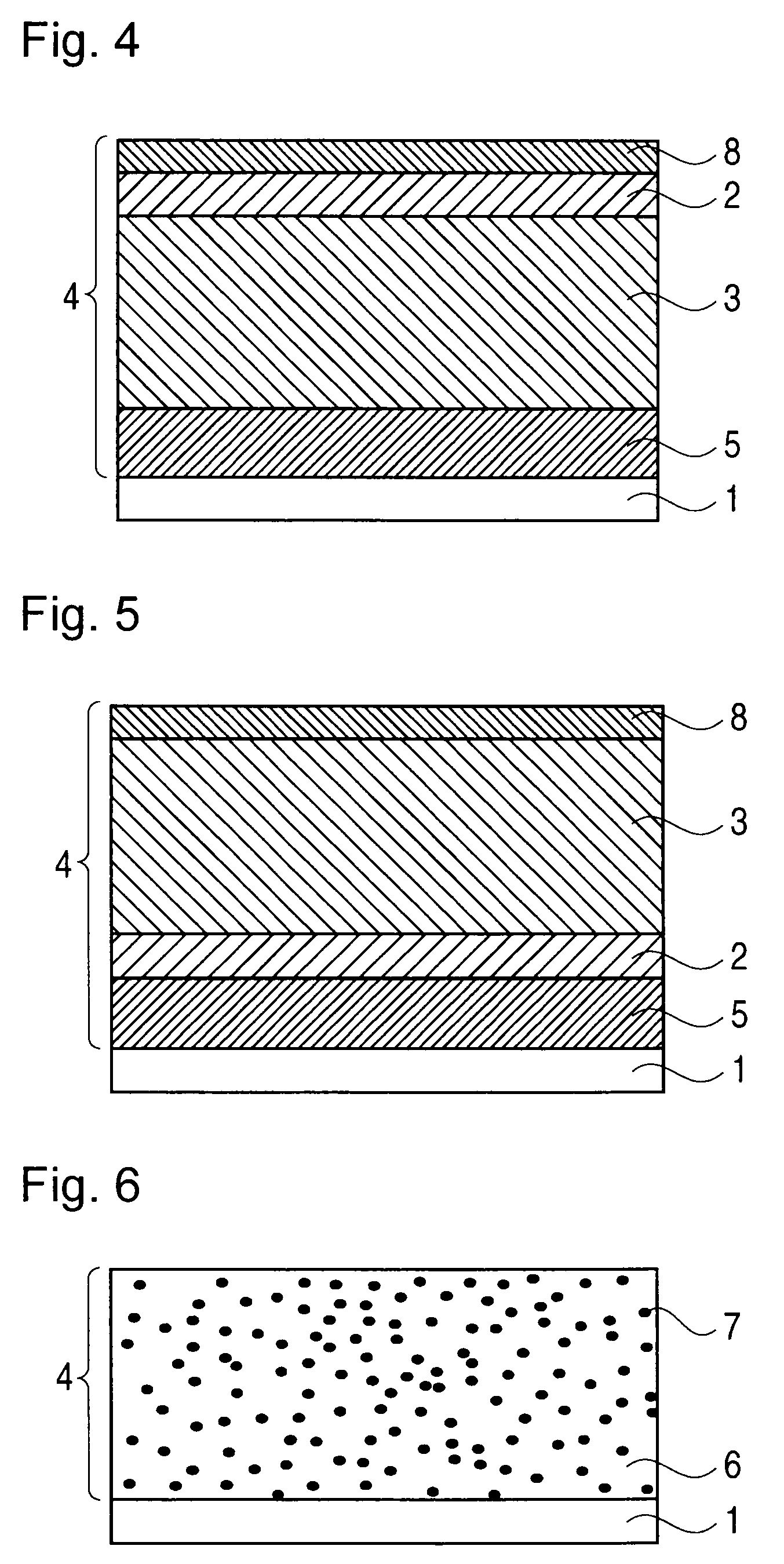P-terphenyl compound mixture and electrophotographic photoreceptors made by using the same
a technology of pterphenyl compound mixture and electrophotographic photoreceptor, which is applied in the preparation of amino compounds, corona discharge, instruments, etc., can solve the problems of difficult production conditions, poor durability, and high cost, and achieve excellent drift mobility, reduce cracking phenomenon, and improve solubility in organic solvents
- Summary
- Abstract
- Description
- Claims
- Application Information
AI Technical Summary
Benefits of technology
Problems solved by technology
Method used
Image
Examples
example 1
Synthesis Example 1
Synthesis of p-Terphenyl Compound Mixture Composed of Compounds No. 1, No. 18, and No. 9
[0065]The following ingredients were mixed together: 16.86 g (92 mmol) of 4-methyldiphenylamine, 3.89 g (23 mmol) of diphenylamine, 24.1 g (50 mmol) of 4,4″-diiodo-p-terphenyl, 17.25 g (125 mmol) of anhydrous potassium carbonate, 0.32 g (5 mmol) of a copper powder, 0.52 g (5 mmol) of sodium hydrogen sulfite, and 10 mL of sulfolane. The resultant mixture was heated to 220-225° C. and stirred for 6 hours while introducing nitrogen gas. After completion of the reaction, a reaction product was extracted with 90 mL of xylene and 150 mL of toluene, and the insoluble matter was removed by filtration. Thereafter, the filtrate was concentrated to dryness. The solid matter obtained was purified by column chromatography (support: silica gel, eluent: toluene:hexane=1:4). Thus, a p-terphenyl compound mixture composed of 4,4′-bis(4-methyldiphenylamino)-p-terphenyl (Compound No. 1), 4-(4-meth...
example 2
Synthesis Example 2
Synthesis of p-Terphenyl Compound Mixture Composed of Compounds No. 1, No. 17, and No. 4
[0068]The following ingredients were mixed together: 16.86 g (92 mmol) of 4-methyldiphenylamine, 4.53 g (23 mmol) of 2,4-dimethyldiphenylamine, 24.1 g (50 mmol) of 4,4″-diiodo-p-terphenyl, 17.25 g (125 mmol) of anhydrous potassium carbonate, 0.32 g (5 mmol) of a copper powder, 0.52 g (5 mmol) of sodium hydrogen sulfite, and 10 mL of sulfolane. The resultant mixture was heated to 220-225° C. and stirred for 6 hours while introducing nitrogen gas. After completion of the reaction, a reaction product was extracted with 90 mL of xylene and 150 mL of toluene, and the insoluble matter was removed by filtration. Thereafter, the filtrate was concentrated to dryness. The solid matter obtained was purified by column chromatography (support: silica gel, eluent: toluene:hexane=1:4). Thus, a p-terphenyl compound mixture composed of 4,4′-bis(4-methyldiphenylamino)-p-terphenyl (Compound No. 1...
example 3
Synthesis Example 3
Synthesis of p-Terphenyl Compound Mixture Composed of Compounds No. 1, No. 19, and No. 6
[0071]The following ingredients were mixed together: 16.86 g (92 mmol) of 4-methyldiphenylamine, 4.53 g (23 mmol) of 4,4′-dimethyldiphenylamine, 24.1 g (50 mmol) of 4,4″-diiodo-p-terphenyl, 17.25 g (125 mmol) of anhydrous potassium carbonate, 0.32 g (5 mmol) of a copper powder, 0.52 g (5 mmol) of sodium hydrogen sulfite, and 10 mL of sulfolane. The resultant mixture was heated to 220-225° C. and stirred for 6 hours while introducing nitrogen gas. After completion of the reaction, a reaction product was extracted with 90 mL of xylene and 150 mL of toluene, and the insoluble matter was removed by filtration. Thereafter, the filtrate was concentrated to dryness. The solid matter obtained was purified by column chromatography (support: silica gel, eluent: toluene:hexane=1:4). Thus, a p-terphenyl compound mixture composed of 4,4′-bis(4-methyldiphenylamino)-p-terphenyl (Compound No. ...
PUM
| Property | Measurement | Unit |
|---|---|---|
| wavelength | aaaaa | aaaaa |
| thickness | aaaaa | aaaaa |
| thickness | aaaaa | aaaaa |
Abstract
Description
Claims
Application Information
 Login to View More
Login to View More - R&D
- Intellectual Property
- Life Sciences
- Materials
- Tech Scout
- Unparalleled Data Quality
- Higher Quality Content
- 60% Fewer Hallucinations
Browse by: Latest US Patents, China's latest patents, Technical Efficacy Thesaurus, Application Domain, Technology Topic, Popular Technical Reports.
© 2025 PatSnap. All rights reserved.Legal|Privacy policy|Modern Slavery Act Transparency Statement|Sitemap|About US| Contact US: help@patsnap.com



